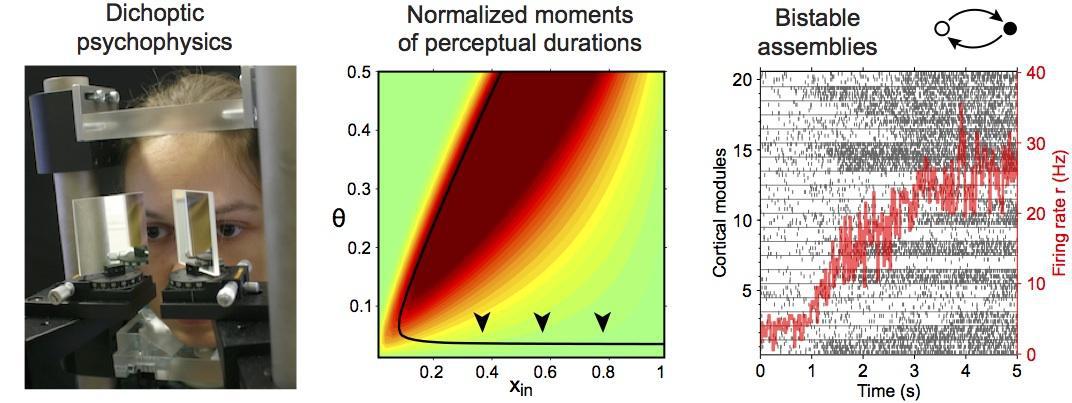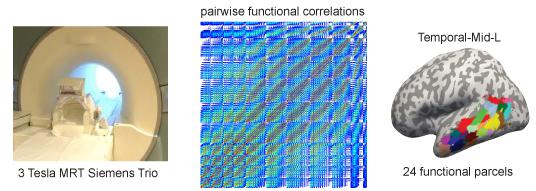We aim to understand aspects of cognitive function (e.g., decisions, grouping, attention) in terms of neural network activity. Typically, we seek to reproduce our experimental observations with reverse-engineered neural networks at suitable levels of abstraction (‘understanding by building’). A particular interest is the spontaneous dynamics of neural activity at different levels ( spiking assemblies, cortical columns, whole-brain dynamics). Our methods include visual psychophysics, stochastic dynamic modeling, functional brain imaging, and neuromorphic VLSI.
Multi-stable visual displays (left) exhibit a characteristic distribution of perceptual durations (middle), combining high variability with low skewness. A finite and discrete stochastic representation -- such as a population of independent and individually bistable neural assemblies (right) -- reproduces this characteristic distribution (Cao, Pastukhov, Mattia & Braun, 2016).
Functional brain imaging (left) of voxel-based correlations (middle) allows a finer parcellation of anatomical regions, here Temporal-Mid-L (right). This finer functional subdivision of the human brain reveals more information about functional correlations than other approaches (Dornas & Braun, 2016).



